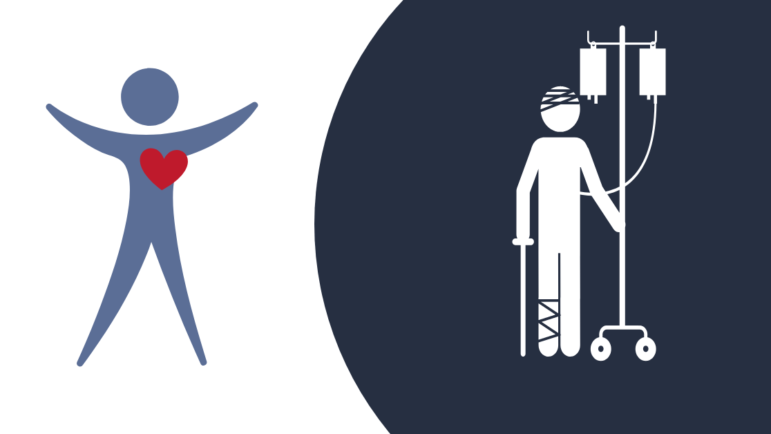We’ve previously written on this blog about the difficulty accessing medical care in rural areas, driven by a shortage of physicians in rural areas as well as a spate of rural hospital closures. However, many people in urban areas also struggle to access medical care in emergencies. While many assume that all city residents would be close to emergency care, this is not always the case, due to residential segregation and geographic disparities in where trauma centers are placed. However, there hasn’t been much research on racial/ethnic disparities in accessing trauma centers, until now.
Race and “Trauma Deserts”
In a new study in JAMA, researchers from the University of Chicago and Stanford University compared distance to the closest adult level I and II trauma center for Chicago, New York City, and Los Angeles neighborhoods of various racial and ethnic composition. This was the first study to examine differences in access to trauma centers by race/ethnicity across these major US cities.
The researchers found that in Chicago and LA in 2018, black majority census tracts were more likely to be located in a “trauma desert” (more than 5 miles from any trauma center) compared to white majority census tracts. People living in black majority neighborhoods in Chicago were more than 8 times as likely to be in a trauma desert compared to people in white majority neighborhoods; in LA they were 5 times as likely. NYC did not demonstrate the same levels of disparity in access to trauma centers, likely because the city has an expansive network of trauma hospitals; more than 85% of all census tracts are within 5 miles of a trauma center. Hispanic/Latinx majority neighborhoods were more twice as likely to be in trauma deserts as white neighborhoods in Chicago, but not in the other cities.
These findings are serious, because being in a trauma desert is associated with higher transport times and mortality after a gunshot wound compared neighborhoods closer to trauma center. This translates to more serious complications and deaths for people in black majority neighborhoods in Chicago and LA.
Trauma and Structural Violence
Sadly, it is the very areas that lack access to trauma centers that need them the most. Black Americans are disproportionately likely to suffer injury or death from firearm homicide; about 59% of gun homicide victims are black, despite being only 14% of the population. Fifty-seven percent of Black Americans know someone who has been shot, compared with 43% of whites and 42% of Hispanic/Latinx Americans. And in Chicago and California, the disparities in gun homicide deaths by race are greater than the national average.
Clearly we need more trauma centers in urban areas that are accessible for racial/ethnic minority neighborhoods, particularly black neighborhoods. Case in point is the Chicago’s new level I trauma center that opened in March 2018, led by Dr. Selwyn Rogers, member of the Right Care Alliance Surgery Council and one of the authors of this study. According to the study, after this trauma center opened in the South Side of Chicago, the odds of black communities being in a trauma desert fell sevenfold.
“Since we opened the trauma center nearly one year ago in May, the disparity in access to adult trauma care has been significantly lessened for African-Americans in Chicago,” said Rogers. Just one well-placed trauma center can make a huge difference in survival from firearm violence. As the authors point out, providing financial incentives to provide trauma centers to underserved neighborhoods is essential for creating sustainable trauma systems in these areas.
However, to reduce racial disparities in gun violence deaths even more meaningfully, we need to target the structural causes of violence as well as access to medical care. Structural violence refers to the harm caused by poverty, racism, and lack of educational opportunities, that are endemic in communities of color.
“Gun wounds can be healed, but it is much harder to heal patients of the chronic conditions brought on by the constant stress of insufficient income, poor education, and substandard housing,” said Dr. Rishi Rattan, trauma surgeon at Jackson Memorial Hospital in Miami, at the 2018 Lown Conference.
The lack of investment in trauma centers and social determinants of health in black majority neighborhoods is partly due to the way media portrays black neighborhoods. The focus on “black on black crime” minimizes structural and historical reasons behind residential segregation and violence. This leads to an empathy gap in who is seen as deserving of aid, and leads to more neglect of communities of color.
“There is a false narrative of ‘drug dealers killing drug users’ but for the overwhelming majority of people in my trauma unit, the only crime is that they’re being raised in an environment that is poor and has more crime,” said Dr. Carrie Sims, trauma surgeon at the University Of Pennsylvania.
